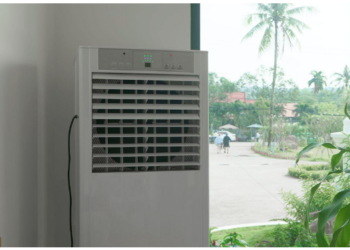In a professional setting, all details associated with your job need to be mandatorily documented and presented to you. This is to ensure employer-employee transparency. One such document is a salary slip. Every salaried employee receives an account of various components pertaining to their salary from their employer on a periodic basis. This document is known as the pay slip or the salary slip.
A pay slip includes details such as the basic pay, allowances, inclusions, deductions, employee details, employer details and so on. Every institution is legally required to issue these documents to their employees. They can either be issued as a hard copy or a soft copy. If they are issued as a soft copy, you can download the pay slip and review your data.
The format of a salary slip differs from employer to employer. Nevertheless, here’s a generic format of all the information that a pay slip includes:
- The company’s logo, name and address
- The month and year of salary slip generation
- The employee’s name, code, department and designation
- The employee’s Aadhaar/PAN and bank account number
- The Universal Account Number (UAN) and EPF account number
- The total number of working days, the number of days attended and the number of leaves taken
- A classification of income and deductions
- The net income in word and numbers
- The number of leaves left.
A salary slip has several components that affect your income. Hence it is essential for you to know what this document entails. There are two main components namely income and deductions. Here’s a rundown of the same to provide better clarity:
Income
This component consists of the elements that make up your income.
Here’s a list of all the subcomponents under this category:
Basic Salary
Your basic salary is a fundamental component of your income. All other components of your salary, including deductions, are based on your basic salary. It constitutes about 30-50% of your total salary. Your basic salary is taxable under the law.
Dearness Allowance
Dearness allowance (DA) is paid to balance the effect of inflation on your pay. It is usually about 30-40% of the basic salary and applicable only to employees in the public sector. On the basis of the cost of living, dearness allowance is decided. Therefore, it differs for each location. During the computation of income tax, both dearness allowance and basic salary are considered as income, and hence, taxable.
House Rent Allowance
Employees that live in rented accommodation are given house rent allowance (HRA). The HRA is dependent on the city that the employee resides in. In a metro city, the HRA adds up to 50% of the basic pay. In other cities, the HRA is about 40% of the basic pay. As the name suggests, the HRA is an allowance and therefore is tax-exempt up to a certain limit, provided you pay rent.
Conveyance Allowance
The conveyance allowance is provided as a compensation for daily expenses on commute. As an allowance, it is exempt from tax up to the limit specified in the Union Budget.
Medical Allowance
The amount that your employer pays you for medical expenses during your term in the company is known as medical allowance. During tax season, medical allowance can be claimed as a deduction under Section 80D. However, you will only receive this amount on the submission of medical bills. Under such a circumstance, an allowance of up to ₹10,000 is tax-free. If you fail to submit the relevant bills as proof, your medical allowance will be taxed.
Leave Travel Allowance
The leave travel allowance is provided to you to cover your expenses while you travel on your leave. The travel expenses of your family members are included as well. Nonetheless, you will need to submit the proof of your journey to claim such a deduction. The expenses that you incur during your trip, apart from on travel, will not qualify for an exemption in tax. Only two journeys within the span of 4 calendar years will be applicable for the exemption.
Special Allowance
A special allowance (SA) is entirely dependent on your work performance and is awarded as a form of encouragement to do better. This amount differs for each employee. The entire amount under this allowance is taxable.
Deductions
This component gives you a picture of all the deductions that have been made from your salary.
Given below is a list of all the subcomponents that it entails:
Provident Fund
The contribution that you make alongside the one made by your employer towards provident funds such as NPS or EPF is shown as a deduction. This fund acts as a financial reservoir at the time of your retirement. About 12% of your basic salary is deducted in this regard. As per Income Tax Act’s Section 80C, contributions made towards EPF are exempt from tax for up to a limit of ₹1,50,000.
Professional Tax
State governments levy a tax on individuals that earn an income referred to as professional tax. This tax is applicable only in certain states. Those states are Bihar, Gujarat, Karnataka, Meghalaya, Telangana, Assam, Tripura, Kerala, Maharashtra, Orissa, Madhya Pradesh, West Bengal, Jharkhand, Andhra Pradesh, Tamil Nadu, and Chhattisgarh. Professional tax is not just limited to working professionals, but applies to those that earn through other mediums as well. This tax amount is deducted from your taxable income.
Tax Deducted at Source (TDS)
On behalf of the department of income tax, your employer deducts tax known as TDS. This is on the basis of your total tax slab. In order to reduce this tax, you can invest in tax-exempt instruments such as equity funds, PPF, NPS, tax saving FDs and such others. You can then submit your investment declaration to your company and claim TDS returns.
Unpaid Leaves
If you have taken a leave of absence without pay during a particular month, the salary deducted will be reflected under this section.
Health Plan Premiums and Gratuity
Although these are not a part of your salary, your employer can include such employee benefit programmes as a portion of CTC.
A salary slip is an important document that serves a number of purposes. To give you a glimpse, a salary slip:
- Acts as a proof of employment
- Helps plan taxes
- Assists in salary negotiations
- Helps avail government subsidies
- Establishes creditworthiness for loan and credit card applications
- Helps seek future employment
Therefore, it is advisable that you always possess a copy of your pay slip to aid you in times of need. In the case that your employer issues soft copies, make sure to download the pay slip and keep it handy for future reference.
This content is a sponsored post. Journalists of MediaNews4U are not involved in writing it.

















